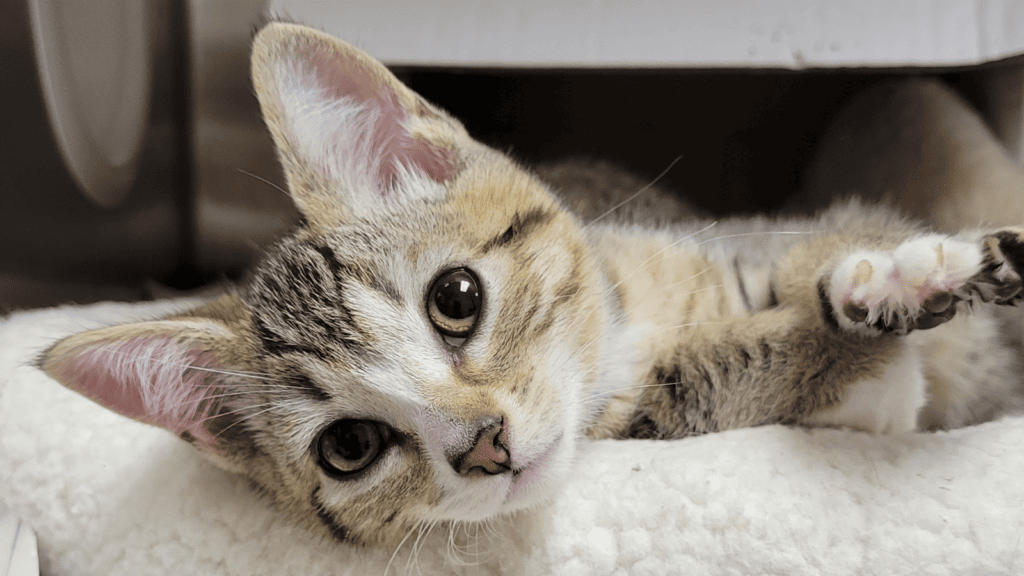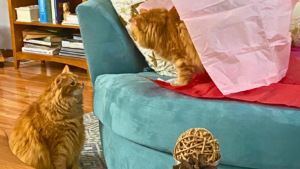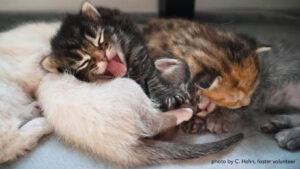The idea of a disaster can be frightening, especially since they can strike without warning.
10 years ago, the CDC named September as National Preparedness Month to “to raise awareness about the importance of preparing for disasters and emergencies that could happen at any time.” What in the world does that mean for us? At Cat Adoption Team, we have a 54-page working disaster action plan so that we’re pre-paw-red for whatever may come our way.
Let’s discuss our plan to continue to oversee the health and safety of the cats and kittens in our care. In the event of a shelter-based or localized disaster, a top priority is to move the shelter animals out of the building. If possible, all cats and kittens would be relocated into our volunteer foster homes. Once we determine the availability of foster spaces, we will move the animals to those locales. In case we have more animals that need to leave the shelter than we have fosters available, we have a plan for that! Alternative cat-safe housing includes, but is not limited to: offsite adoption centers, Oregon Humane Society’s emergency building, and space at other partner organizations.
Of course, people are important, too, and we mean to keep our volunteers and staff members out of harm’s way during an event. If we’re able to move all the cats and kittens out of the shelter, most staff and volunteers won’t be needed onsite. But, what about an emergent disaster that allows us to safely keep cats and kittens at the shelter, but requires us to be closed to the public? We have a plan for that, too! Fortunately, we have the simple solution of shifting to our “holiday schedule,” which means we care for the kittens and cats with a skeleton crew. The bare minimum staff will be in the shelter to keep the basics running, like feeding, vet care, cleaning, and some admin support if necessary.
During a disaster of any magnitude, communication is key, as is the understanding of who the decision makers are at any given time. Laid out in our extensive meow-nual is the outline that explains who is responsible for determining and/or announcing which decisions and protocols will be enacted.
Yeah, thinking about a disaster of any size can be scary and overwhelming, but preparation helps! At CAT, having a disaster plan means we’re a little less anxious and a little more prepared. Hopefully, you can breathe a bit easier knowing we’re doing what we can to take the best care of the people and animals who count on us.







